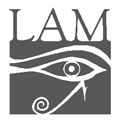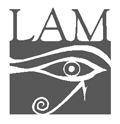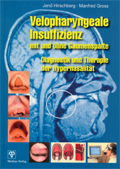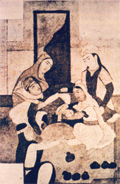The eLitMed.hu medical portal uses computer cookies for convenient operation. Detailed information can be found in the Cookie-policy.
Lege Artis Medicinae - 2007;17(03)
Content
[BISPHOSPHONATES IN THE TREATMENT OF BONE METASTASES]
[Bisphosphonates are used in the treatment of malignant diseases with bone metastases and of osteoporosis. The currently available bisphosphonates have a wide range of effectiveness, tolerability and dosing profiles. In metastatic disease, bisphosphonate therapy is aimed at the correction of hypercalcaemia and the reduction of skeletal-related events due to malignancy metastatic to bone. Large clinical trials have shown that long-term administration of bisphosphonates can reduce skeletal-related events by 30 to 40% and significant analgesic effect is reached in at least 50% of the patients. The superiority of zoledronate to the old standard pamidronate has been proved in large randomized trials. Despite the fact that bisphosphonates are generally well tolerated, certain toxicities such as renal toxicity and osteonecrosis of the jaw should be considered with prolonged use.]
[PATHOPHYSIOLOGY, DIAGNOSIS AND THERAPY OF THE EXTRAOESOPHAGEAL MANIFESTATIONS OF GASTRO-OESOPHAGEAL REFLUX DISEASE]
[Recently, considerable interest has been focused on the extra-oesophageal manifestations of gastro- oesophageal reflux disease. Vago-vagal reflex mechanisms have been shown to play a leading role in the pathogenesis of the extra-oesophageal manifestations. In addition, proximal reflux and subsequent chemical irritation of the respiratory tract mucosa are important factors in the development of respiratory symptoms. In contrast to the uncomplicated cases of gastrooesophageal reflux disease, the recognition of these variations may pose a diagnostic challenge right because of the lack of typical symptoms. Successful diagnosis rests with the cooperation of the general practitioner, the specialist observing the extra-oesophageal symptom and the gastroenterologist. The establishment of the pathogenic role of gastro-oesophageal reflux may require verification by oesophageal functional tests. Treatment is based on long-term administration (for at least 3 months if respiratory symptoms are present) of an increased-dose proton pump inhibitor. In the long term, laparoscopic anti-reflux surgery is a realistic alternative to medical treatment in suitable patients. Dietary and life-style education of patients has an important complementary role in the successful long term management.]
[THE ROLE OF SIMVASTATIN IN THE TREATMENT OF DIABETIC DYSLIPIDAEMIA]
[Patients with type 2 diabetes have markedly increased cardiovascular morbidity and mortality. Type 2 diabetes is typically associated with atherogenic dyslipidaemia, which is characterized by elevated triglycerides, low plasma levels of high-density lipoprotein cholesterol, and an increased ratio of small, dense lowdensity lipoprotein particles. Current treatment guidelines stress the importance of lipidlowering therapy in reducing cardiovascular risk in diabetic patients. Statins currently represent the cornerstone of dyslipidaemia management, based on their ability to efficiently reduce cardiovascular risk through lowering low-density lipoprotein cholesterol. They have, however, a relatively modest effect on the components of atherogenic dyslipidaemia, since they reduce triglycerides by only 15 to 35% and elevate high-density lipoprotein cholesterol by less than 10%. This raises the need for combining statins with other lipid-lowering drugs (ezetimibe, nicotinic acid, fibrate) at an early stage of type 2 diabetes. Authors review the role of simvastatin monotherapy in the treatment of diabetic dyslipidaemia and summarize the results of studies on simvastatin as part of a combined lipid-lowering treatment.]
1.
Clinical Neuroscience
Is there any difference in mortality rates of atrial fibrillation detected before or after ischemic stroke?2.
Clinical Neuroscience
Factors influencing the level of stigma in Parkinson’s disease in western Turkey3.
Clinical Neuroscience
Neuropathic pain and mood disorders in earthquake survivors with peripheral nerve injuries4.
Journal of Nursing Theory and Practice
[Correlations of Sarcopenia, Frailty, Falls and Social Isolation – A Literature Review in the Light of Swedish Statistics]5.
Clinical Neuroscience
[Comparison of pain intensity measurements among patients with low-back pain]1.
Clinical Neuroscience Proceedings
[A Magyar Stroke Társaság XVIII. Kongresszusa és a Magyar Neuroszonológiai Társaság XV. Konferenciája. Absztraktfüzet]2.
3.
Journal of Nursing Theory and Practice
[A selection of the entries submitted to the literary contest "Honorable mission: the joys and challenges of our profession" ]4.
Journal of Nursing Theory and Practice
[End of Life and Palliative Care of Newborns in the Nursing Context]5.
Journal of Nursing Theory and Practice
[Aspects of Occupational Health Nursing for Incurable Patients ]






















